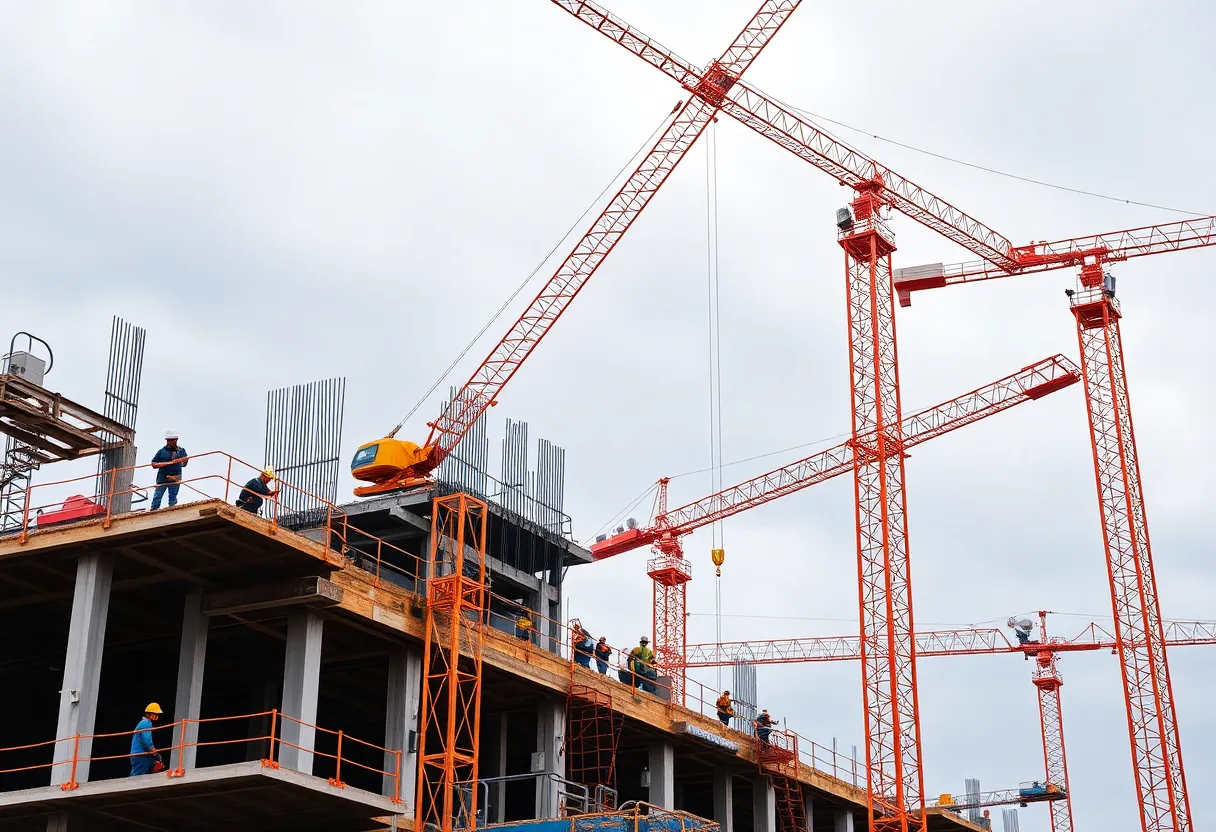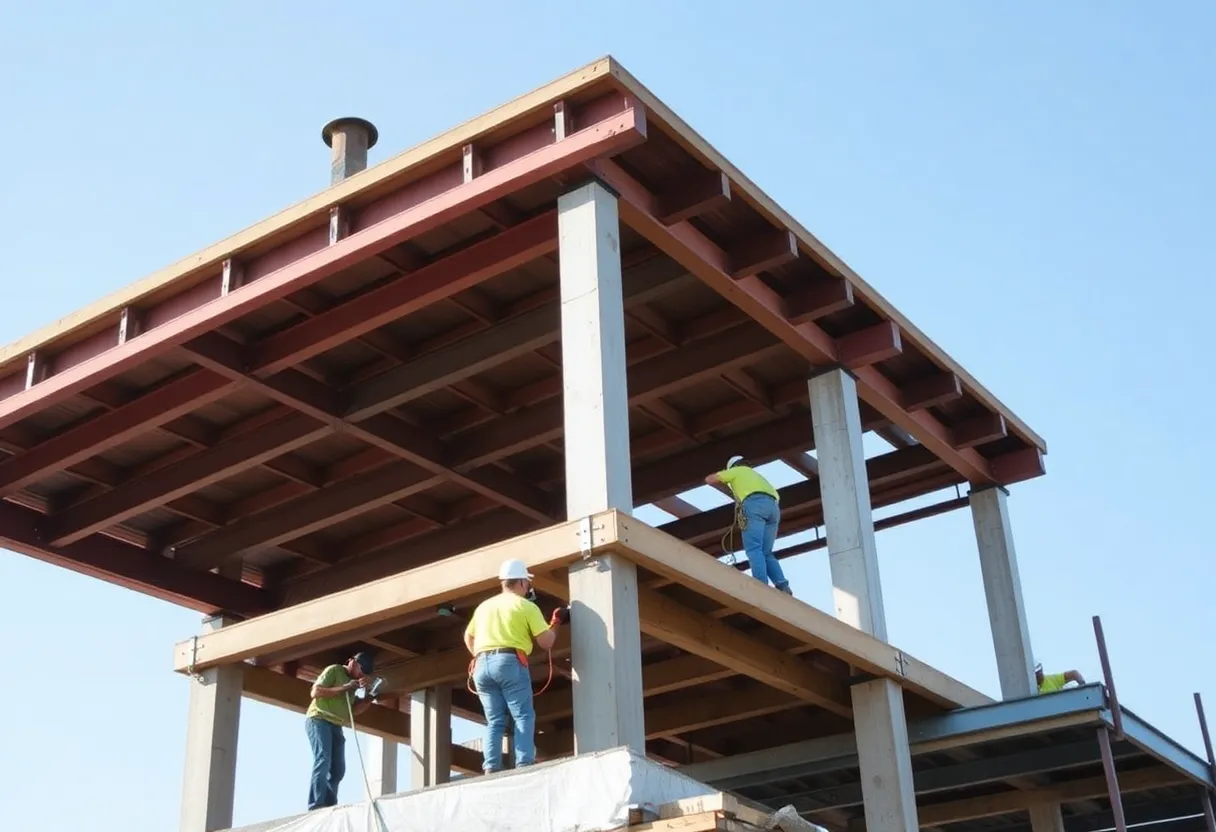News Summary
Skanska AB has reported a mixed performance for the second quarter, with revenue declining to SEK 44.6 billion. Despite a 26% drop in operating income, the construction segment showed resilience with a 3.9% operating margin. The company is focusing on operational efficiency measures, including digitalization and sustainability initiatives. However, challenges remain, including a weak housing market and labor shortages. Skanska is shifting its strategic focus to high-margin infrastructure projects while managing costs and navigating geopolitical risks. Investors are looking forward to updates in the upcoming interim report.
Skanska AB Faces Mixed Performance in Q2 2025 Amid Economic Challenges
Skanska AB, the prominent Swedish construction and development firm, reported a mixed performance for the second quarter of 2025, highlighting the ongoing challenges posed by high inflation and shifting strategic priorities. Revenue for the quarter fell to SEK 44.6 billion, down from SEK 47.4 billion in the same period last year.
The company’s operating income also saw a significant decline, with a reported SEK 1.8 billion for Q2, marking a 26% drop year-over-year. Despite these declines, Skanska’s construction segment managed to maintain a 3.9% operating margin, an improvement from 3.5% in 2024, even as the revenue remained flat.
Operational Efficiency Measures
In response to mounting inflationary pressures, Skanska has implemented various strategies aimed at optimizing operational efficiency and stabilizing profit margins. The company’s rolling 12-month book-to-build ratio stands at 113%, indicating robust order growth. Key initiatives include a push for digitalization and sustainability-driven processes designed to minimize waste and enhance workflow efficiency. Notably, Skanska has adopted Building Information Modeling (BIM) and automation tools to improve predictability in project management.
Despite challenges, the company has shown procurement agility in response to rising material costs. For instance, structural steel prices have surged by 5% year-to-date, yet Skanska has managed to cushion potential margin erosion through strategic purchasing tactics.
Market Pressures and Opportunities
Despite the efforts to stabilize the business, the Nordic housing market remains weak, impacting Skanska’s Residential Development revenue due to a lack of consumer confidence. Additionally, high interest rates have impacted the U.S. commercial property market, reducing opportunities in Commercial Property Development. Tariffs on imported materials, including a 25% tariff on steel and a 14.5% tariff on lumber, have further increased direct costs by 5-10%.
Skanska is also grappling with labor shortages, which could be exacerbated by potential changes in immigration policy, raising concerns about wage escalation. The company’s adjusted return on equity sits at 9.5%, showing some signs of stabilization, while the rolling 12-month operating margin stands at 3.7%.
Strategic Focus Shifts
To navigate these challenging conditions, Skanska has shifted its focus towards public-private partnerships (P3s) and high-margin infrastructure projects, such as a notable $1.2 billion renovation of the Stockholm City Hall. This pivot is reflected in the company’s capital deployment strategy for 2025, which emphasizes debt management and regional agility. The adjusted net cash flow is reported at SEK 9.7 billion, with an equity ratio of 37%.
Furthermore, Skanska has strategically aligned its debt issuances with anticipated Federal Reserve interest rate cuts expected later in 2025. The company’s Residential Development segment managed to achieve an 11.3% operating margin, benefiting from effective home-building practices, while the Project Development segment reported a return on capital employed of 1.4%, a marked improvement from -1.3% in 2024.
Future Outlook and Challenges
Despite the mitigating strategies, Skanska continues to face geopolitical risks, including regional wildfires and supply chain disruptions, which may hinder operational fluidity. Investors are eagerly awaiting the upcoming interim report for Q1 2025, which is scheduled for May 7, 2025. This report is highly anticipated for updates concerning cost management and the sustainability of dividends amidst a backdrop of declining profits. Skanska declared a SEK 8 per share dividend in Q2, raising concerns about long-term affordability in the current economic environment.
In conclusion, while Skanska has displayed operational agility and a focus on efficient margin management, the firm must navigate ongoing volatility from labor and material costs in the near term. Interestingly, the company’s valuation is currently at the lower end of its historical range, which may present potential investment opportunities for discerning investors.
Deeper Dive: News & Info About This Topic
Additional Resources
- Ainvest: Skanska Q2 2025 Performance
- New Civil Engineer: Skanska Wins £153m Contract
- Construction Digital: Skanska Reports on Opportunities
- Wikipedia: Skanska
- Google Search: Skanska AB performance 2025
Author: Construction FL News
The FLORIDA STAFF WRITER represents the experienced team at constructionflnews.com, your go-to source for actionable local news and information in Florida and beyond. Specializing in "news you can use," we cover essential topics like product reviews for personal and business needs, local business directories, politics, real estate trends, neighborhood insights, and state news affecting the area—with deep expertise drawn from years of dedicated reporting and strong community input, including local press releases and business updates. We deliver top reporting on high-value events such as the Florida Build Expo, major infrastructure projects, and advancements in construction technology showcases. Our coverage extends to key organizations like the Associated Builders and Contractors of Florida and the Florida Home Builders Association, plus leading businesses in construction and legal services that power the local economy such as CMiC Global and Shutts & Bowen LLP. As part of the broader network, including constructioncanews.com, constructionnynews.com, and constructiontxnews.com, we provide comprehensive, credible insights into the dynamic construction landscape across multiple states.





